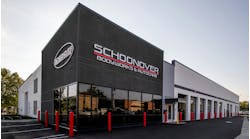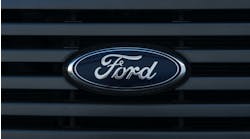Aug. 3, 2017—Total aluminum content in vehicles is expected to grow from 397 pounds per vehicle (PPV) in 2015 to 565 PPV by 2028, representing 16 percent of total vehicle weight, according to a survey of automakers conducted by Ducker Worldwide.
"“As our automotive customers embrace a multi-material approach to new car and truck design, that directly translates to increased amounts of aluminum," said Heidi Brock, president and CEO of the Aluminum Association. "On top of 40 years of uninterrupted growth, the aluminum industry is experiencing a level of sustained growth not seen before in any market or product sector."
This is consistent with the emerging trend of automakers transitioning to a multi-material vehicle design approach, choosing aluminum for doors, hoods and trunk lids, body-in-white, bumpers and crash boxes.
“Aluminum remains the fastest growing automotive material over competing materials and is entering its most unprecedented growth phase since we’ve been tracking the shifting mix of automotive materials,” said Abey Abraham of Ducker Worldwide. “To further improve fuel economy, battery range, safety and overall driving performance, automakers no longer default to a single material and instead are pursuing a multi-material design approach where the best material is chosen for the best application. This design evolution is what’s driving aluminum’s increased market penetration in the auto sector.”
2020 Projections
The study finds that total aluminum content for North American lightweight vehicles will increase to nearly 9 billion pounds, averaging 466 PPV by 2020, an increase of 69 pounds from 2015. Aluminum parts will more than double with aluminum hoods expected to reach 71 percent penetration (up from 50 percent today).
Fifty percent of total aluminum content growth from 2015 to 2020 will be driven by closures, crash management systems, steering knuckles and structural vacuum die cast parts. Aluminum vacuum die castings are expected to grow from less than three PPV today to 14 PPV by 2020.
The average passenger car will contain 362 pounds of aluminum and the average light truck will contain 523 pounds of aluminum by 2020.
2020 to 2028
Ducker projects total aluminum content growing to 565 PPV (16 percent of curb mass) by 2028 with nearly 25 percent of vehicles having partial aluminum body-in-white. More than two million of those vehicles will be pickup trucks and 400,000 will have plug-in hybrid or zero-emissions powertrains.
Forecasts for the 2020-2028 time period are based on EPA and NHTSA technology implementation pathways suggesting mass reduction from zero percent for some passenger cars and small SUVs to 20 percent for large trucks and SUVs to achieve an overall industry average mass reduction of 7 percent (270 pounds) by 2025.
Empirical evidence from Ducker’s research suggests achieving 7 percent curb mass reductions is likely to be delayed to 2028 due, in part, to new model launch timing constraints with several vehicles expected to launch post-2024 with significant aluminum body content. Under either scenario, a multi-material approach is the expected pathway with aluminum contributing to more than 50 percent of total mass reduction.


